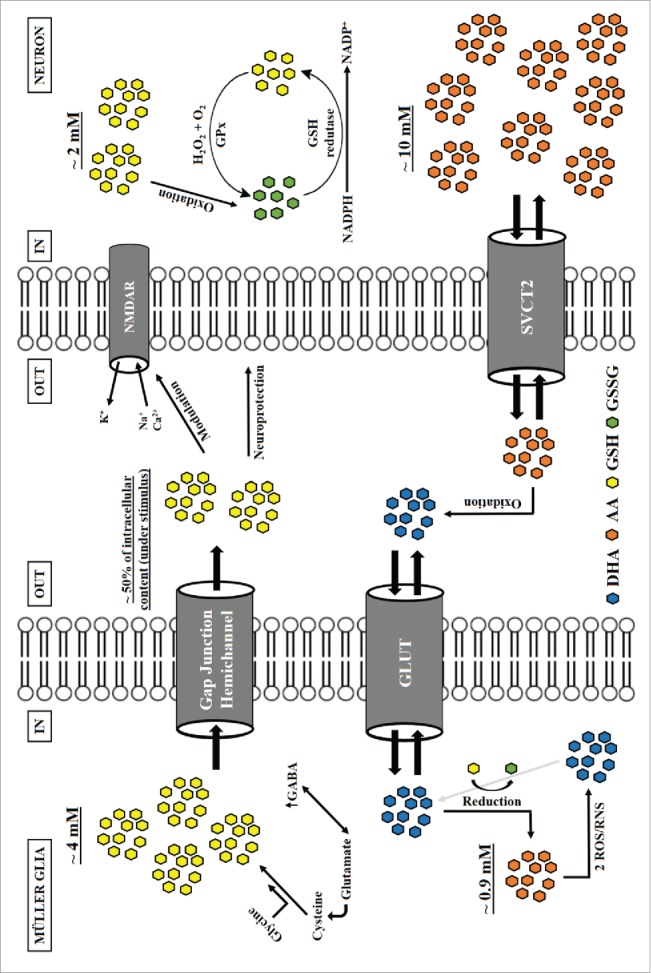Figure 1.

Antioxidant compartmentalization in the neuroglial environment. Neurons and glia (e.g. Müller glia) accumulate different levels of low molecular weight antioxidants within the intracellular space. While ascorbic acid (AA) is preferentially found in neurons (∼10mM, 10:1 neuron: glia), GSH is mainly present in glial cells (∼4mM, 2:1 glia: neuron).1,2 When stimulated, glia cells release nearly half of its GSH content to the extracellular compartment, possibly through formation of a gap junction hemichannel.24 When released, GSH may provide neuroprotection and modulate the activity of several membrane receptors, including NMDAR.21 In this context, neuronal ascorbate has been shown to serve as a compensation for loss or disruption of components from the antioxidant network (e.g., GSH, GSH peroxidase, catalase), providing basal antioxidant stability.35 While GSH recycling (GSSG reduction) depends on cell energy status (i.e., NADPH to NADP+ ratio), AA is ultimately recovered from and enzymatic reaction of GSH with DHA.36 Also, both GABA and GSH synthesis depend on plasma glutamate, which indicates interplay between antioxidant and neurotransmitter production in glial cells.37 Finally, release of both GSH and AA act as major components of extracellular protection and communication in neuroglia systems.35
